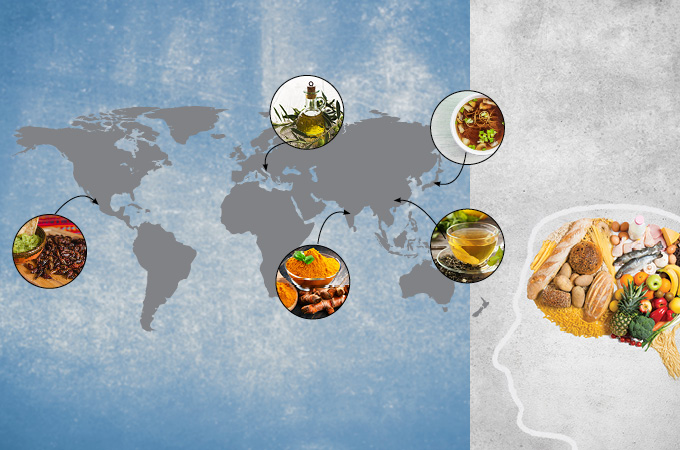What will you eat today? Are your meals carefully planned, or will you just grab something on the go? The ‘fuel’ for our bodies has a huge impact on our physical and mental health, but we often spend surprisingly little time thinking about what we’re putting on our plates. We asked local experts what is most beneficial.
diet do’s & don’ts
DO eat the rainbow. We often think green when it comes to veggies, but Dr. Scott Jamison, a functional medicine physician at PALM Health, notes that it’s important to fill your plate with a variety of hues. “Color in nature is nutritionally representative,” he says. “A rainbow on your plate means you’re getting important phytonutrients and antioxidants. If everything is brown or beige, that means you’re eating too much meat, starch or processed foods.”
DON’T create nutritional holes. Many diets suggest cutting whole food groups, although some of them, like vegetarianism and veganism, have known benefits and are sustainable in the long-term. Dr. Jill Bosanquet, an obesity medicine specialist at SSM Health DePaul Hospital, says to make sure you still get proper nutrients. “If you cut carbs, you’re going to have to get fiber from other sources, and no meat means looking at alternatives for protein,” she explains. “Do your research, and it’s always a good idea to talk to a medical professional about dietary decisions.”
DO watch the clock. Try a time-restricted eating schedule. Research shows that consuming your daily caloric intake within an 8-hour period is best.
DON’T go for processed. Limiting refined sugar and processed foods is the first step to any healthy diet. Don’t think you eat too much of the bad stuff? Jamison suggests keeping a food diary so you’re more aware of what you’re actually consuming. “It’s a very insightful exercise,” he says.
DO consult an expert. There are a lot of diets out there, and many of them help with different health conditions. Talk to your primary care physician or a dietician. They can help you develop a nutritional plan that best fits your lifestyle and medical concerns.
DON’T be shortsighted. Bosanquet says it’s important to pick a nutrition plan you can stick with long-term. “Fad diets often have a short lifespan because people can’t maintain such drastic changes,” she explains. “Cutting out a food group like carbs or dairy leads to an initial weight loss, but people often return to their regular eating habits and gain it back. I usually talk to patients about moderation. Try limiting your fat intake rather than making entire food groups off limits.”
eat this
superfoods
From grains to fruits, plenty of products are being touted for their potential health benefits, but what does the term actually mean? “‘Superfood’ is a marketing tool rather than a medical concept, but incorporating them in your diet isn’t a bad thing,” Bosanquet notes. “Many of the foods that get the label fall into the fresh fruit and vegetable categories.” While it’s important to note that not all uses of the epithet are backed by credible scientific research, there are many superfoods with proven benefits.
Dark, leafy greens: Nutrient-dense and an excellent source of folate, zinc, iron, magnesium, vitamin C and fiber.
Berries: Rich in nutrients and antioxidants
Avocado: Packed with potassium, healthy fat, fiber, and vitamins C, E and B5
Sweet potatoes: Filled with potassium and fiber; also a source of carotenoids, powerful antioxidants
Salmon: A good source of omega-3 fatty acids, protein and selenium
global influence
Thanks to the popularity of meal plans like the Mediterranean and Okinawa diets, more people are looking around the globe for healthy eating inspiration. “The standard American diet is why our country struggles with issues like obesity, heart disease and diabetes,” Jamison says. “Research has shown that other countries’ dietary habits can have positive health outcomes.”
The Mediterranean ⇒ Olive oil: A great source of healthy fat that is linked to a reduced risk of heart disease and diabetes
Japan ⇒ Miso (fermented soybean seasoning): Contains probiotics that support a healthy gut microbiome
India ⇒ Turmeric: Traditionally associated with several medicinal uses, including antioxidant and anti-inflammatory effects
China ⇒ Green tea: Rich in antioxidants and polyphenolic compounds that have a strong anti-inflammatory function
Mexico ⇒ Chapulines (aka crickets): Protein-rich and more sustainable than other livestock, which require more space and water to raise and create greenhouse gases
the right stuff
Eating healthy may seem like a daunting undertaking, but Simon Lusky, the culinary mind behind Revel Kitchen, says it’s all about putting the right pieces together. “With the correct blueprint, it’s easy to build nutritious meals,” he says. “Start with smarter, cleaner choices. Go for simple, whole foods rather than something with a lot of components.”
simon says:
include in every meal:
- Clean carbohydrates
- Lean protein
- Vegetables
- Healthy fat
- Anti-inflammatory spices
sample meal plan
- Breakfast: Eggs cooked with olive oil and green vegetables with fruit on the side
- Lunch: A mixed greens salad with grilled chicken, carrots, sweet potatoes, quinoa and a tahini-based dressing
- Dinner: Salmon with fresh herbs and roasted cauliflower and squash
- Snacks: “Earlier in the day, it’s good to eat fruit so you burn its natural sugars,” Lusky says. “After lunch, high-protein snacks like jerky or nuts will make you feel full, so you don’t overeat at dinner.”
- Don’t forget! Drink water throughout the day.
deciphering labels
Food packaging is a lot more complicated than it once was. New terms and logos regularly pop up, but what’s just marketing buzz and what actually makes a difference? To help eliminate the confusion, we’re unpacking three of the most common terms applied to produce and food labels.
All Natural: Consumer Reports found that more than 50% of people look for products that are labelled ‘natural.’ However, the term is not regulated by the Food and Drug Administration (FDA) or any other agency. With the lack of oversight, the term is essentially meaningless when used on food packaging, and products may contain genetically modified organisms (GMOs), hormones, pesticides or artificial ingredients.
Non-GMO: The FDA does not require GMOs, or genetically engineered (GE) plants, to be labeled as such. The Non-GMO Project offers third-party verification, and its seal of approval (featuring a butterfly) can be found on more than 30,000 products.
Organic: The U.S. Department of Agriculture (USDA) has a list of exempted ingredients that cannot be used when producing certified organic foods. This includes synthetic fertilizers, industrial pesticides, antibiotics, growth hormones and artificial ingredients. GMOs also are prohibited in organic foods. For a product to be labeled organic by the USDA, it must be made from at least 95% organic ingredients.








